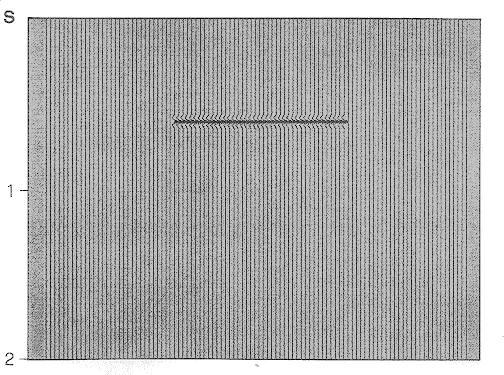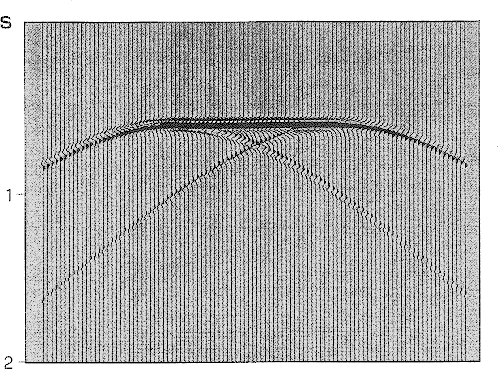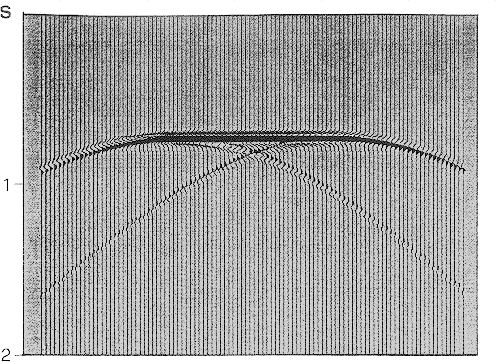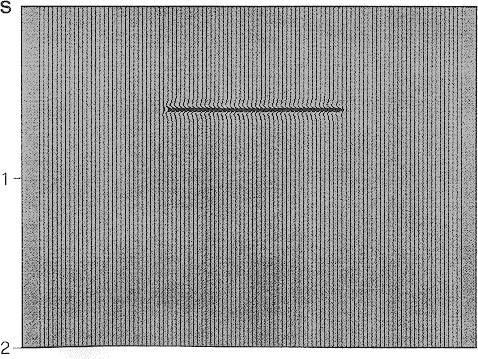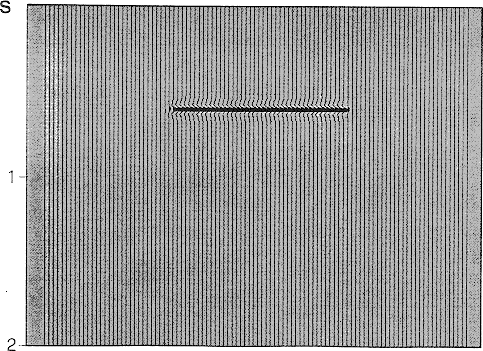




Next: Variable velocity sections
Up: Migration algorithm
Previous: Migration algorithm
Figure 1 shows a simple flat horizon as a reflection profile on a
depth section converted to two-way traveltime. Figures 2 and 3
show, respectively, the zero-offset and common-offset seismic
response of the reflector. In generating the seismic response in
Figure 3, the common offset
distance was taken as 1000 m. The reflector is assumed to lie in a
medium of constant velocity equal to 2000 m/s.
f3-8a
Figure 1
Horizontal reflector (constant velocity, 2000 m/s).

f3-8b
Figure 2
Zero-offset seismic response of horizontal reflector model.

f3-18a
Figure 3
Common-offset seismic response of the horizontal reflector model.

The zero-offset response shows that the reflected horizon remains
unshifted in time. However the edges give rise to diffracted energy,
and the ends of the reflector are now not so clearly defined. Figure 4
shows that migration successfully collapses the diffractions, and the
edges of the horizon are once more shown to lie at their true lateral
positions.
f3-8c
Figure 4
Migration of zero-offset section.

f3-18b
Figure 5
Migration of common-offset section.

Referring to the common-offset seismic response in Figure 3
and comparing this section to the
zero-offset response in Figure 2, the whole reflector is shifted down
the section by a time interval which is determined by the
source-receiver separation. It is also evident that seismic
diffractions in nonzero-offset records behave in a similar way to
those shown on zero-offset sections. Figure 5 shows the output
migrated image. All points on the reflector have been correctly
repositioned in time and space. Diffracted energy has been completely
removed, and the lateral termination points of the horizon have been
redefined accurately.





Next: Variable velocity sections
Up: Migration algorithm
Previous: Migration algorithm
Stanford Exploration Project
11/11/1997
